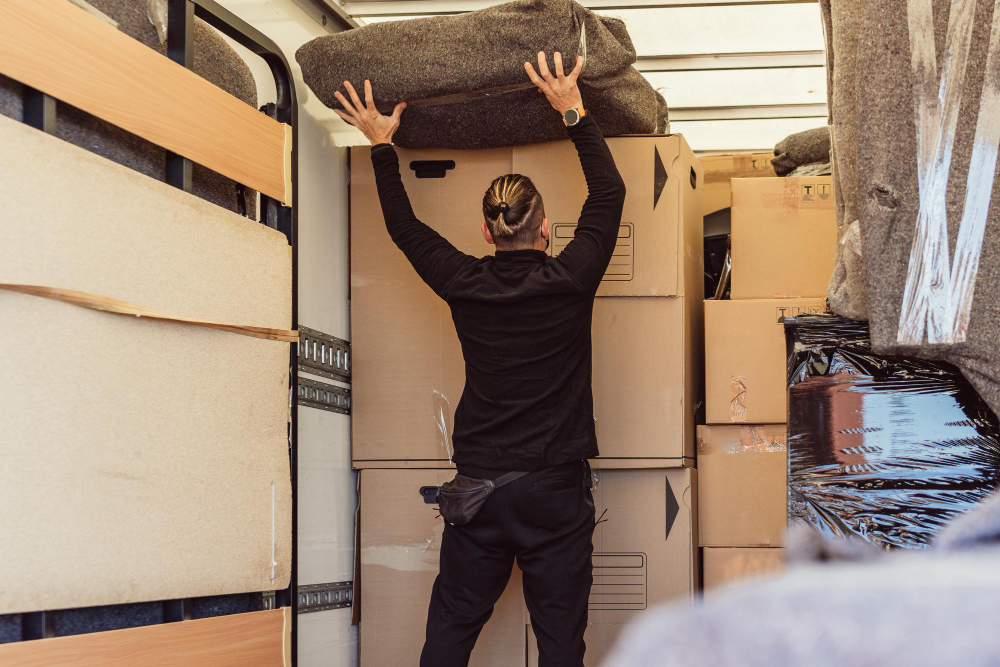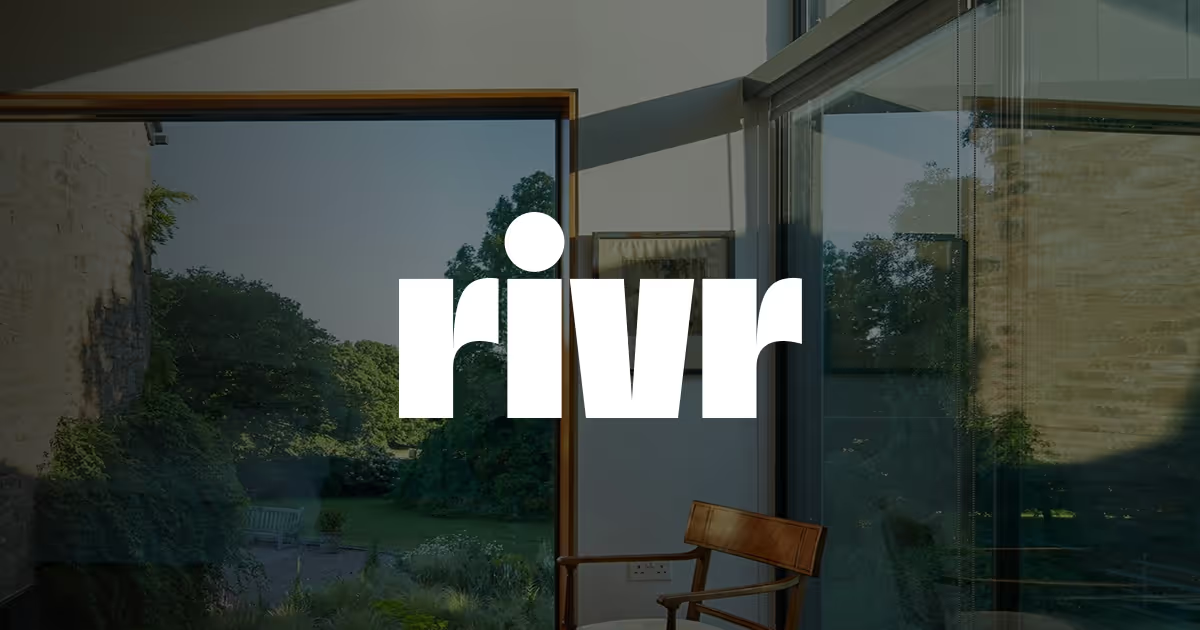
Moving House Insurance: What to sort before, during, and after your move
Moving house brings a mix of legal and practical steps, and insurance sits right in the middle. You will need to time buildings cover correctly, make sure contents are protected during the moving process and any storage, and line up dates so there are no gaps between addresses.
For higher value homes and possessions, pay attention to single-item limits, valuations, and any professional-packing conditions. With rivr, your belongings are insured during transit when you move home, as long as you use professional movers.
This guide outlines when to start buildings cover, how contents are insured in transit and storage, what removals insurance includes and excludes, how to coordinate policies across addresses, and the disclosures that keep claims straightforward.
Do you need buildings insurance, contents insurance, or both?
Buildings insurance protects the main structure of the property, including fixtures and outbuildings. If you have a mortgage, your lender will usually require buildings insurance to be in place from exchange.
Leaseholders should check whether the freeholder insures the block and what buildings insurance covers, as some fixtures may still fall to you. If you rent, buildings is typically the freeholder’s job.
Contents insurance protects your belongings, from sofas and clothing to gadgets and art. You can buy contents on its own or as combined buildings and contents if you own the home.
Contents commonly starts on your move-in date, but some people prefer to set it earlier to catch loading day and first nights.
You can also consider other types of protection such as home emergency or legal expenses if they suit your situation.
Who needs which
- Mortgage buyer: buildings insurance from exchange; contents from move-in.
- Cash buyer: still take buildings from exchange; contents from move-in.
- Leasehold buyer: check the freeholder’s policy; you may need contents and any fixtures you are responsible for.
- Renter: usually contents only; landlord handles the building.
When should buildings insurance start?
The guidance below applies across the British Isles, with jurisdiction notes for England and Wales, Scotland and Northern Ireland.
England and Wales: the buyer is usually legally responsible for the property from exchange of contracts, so buildings cover should start at that point. That is the safest date to set on your insurance policy, even if you have a gap before completion.
Scotland: risk usually passes at the date of entry, so arrange buildings insurance for the move-in date unless your missives state otherwise.
Northern Ireland: practice generally mirrors England and Wales, with risk usually passing at exchange unless the contract states otherwise.
New builds: some lenders or policies require cover from completion rather than exchange; confirm with your solicitor and lender.
Contents insurance typically aligns with move-in, but overlap helps when you start sending boxes early or stay between homes for a few nights. If sellers leave items, confirm who covers them during the overlap and keep details in writing.
Are your contents covered while moving?

Plan cover alongside the moving process so there are no gaps on loading days or overnight stops. Cover in transit is not automatic under all home insurance policies.
Many home policies only include removals cover when you use a professional removals service, so DIY van moves are often excluded unless your policy says otherwise. If you hire your own van, you might have gaps unless your home insurance specifically extends to moves.
Note: Under most removal company insurances, firms accept liability only for items they packed themselves.
What removals cover actually includes (and common exclusions)

Includes
- Accidental loss or accidental damage during loading, transit and unloading when done by a professional firm.
- Theft from a secured vehicle while in the crew’s care.
- Short-term carrier storage between pick-up and delivery, where agreed.
Often excluded or limited
- Owner-packed glass, china and similar unless pro-packed.
- Unattended vehicles without secure access and locks.
- Cash, documents, jewellery and expensive items unless declared or specified.
- Per-item limit and overall cover limits that can be lower than your own policy.
- Self-moves or a friend’s car unless your policy says otherwise.
In practice, removals insurance carried by the moving firm protects their liability as a company, not your whole risk. Read their terms, ask about any excess, and confirm how they evidence items lost or stolen in transit. Confirm the level of service promised in the remover’s contract and how claims evidence will be handled.
How to coordinate insurance across old and new addresses
- Tell your current insurer your move date and new address, and confirm cover stays active until you hand over the keys.
- Start buildings from exchange for the new property; confirm the contents start date for your new home.
- Manage any overlap or void period so you do not pay twice unintentionally; brief both insurers on lock and alarm requirements at each address.
- If your existing policy cannot be amended, arrange a new policy early, then cancel the old one when safe to do so.
Temporary storage between homes

Moves often involve a short stay when the new place isn’t ready. You have four common routes:
- Use the removals firm’s liability while goods sit in their depot.
- Rely on your contents policy’s temporary removal or storage extension if included.
- Arrange insurance sold by the self storage facility for items kept in a private unit.
- Buy a separate specialist policy that covers goods while stored offsite.
Questions to ask
- What security is in place at the facility (CCTV, monitored access, unit alarms, fire protection)?
- Are inventories, photos and a declared value required for your belongings?
- What are the single-item limits and any valuation requirements for art, watches and other expensive items?
- Are there exclusions for prohibited goods (cash, documents, perishables or hazardous items)?
- If using a self storage unit, is cover provided by the site, by your own policy, or both—and how do claims work?
Note: Storage arranged via a remover or a facility is usually a liability policy in their name with per-item and total caps based on your declared value. It isn’t a like-for-like replacement for your own contents cover unless your policy explicitly extends to storage.
High-value items and special considerations
For jewellery, art, watches and collections, keep valuations current and update sums insured and specified items lists before the house move. Check the definition of valuables and any single-article limit under your home insurance cover.
Some insurers require professional crating, named carriers, or explicit routing instructions to protect delicate pieces. If the home includes unusual fixtures or bespoke finishes, disclose them. That helps your insurer price the cost to insure properly and prevents disputes over the main structure and built-ins.
Leasehold, listed, and non-standard construction notes
Leasehold buyers should confirm if the freeholder’s buildings policy covers the flat and common parts, and whether any internal fixtures remain your responsible area. Listed or non-standard construction needs an accurate rebuild price and materials disclosure.
Check your lease to confirm who should arrange the buildings insurance, and whether any fixtures remain your responsibility.
If you are planning renovations at the new property, tell your insurer early. Some works need different insurance terms; most insurers restrict accidental damage or escape of water during major refurbishments.
What to tell your insurer when you move (to avoid claim headaches)
Material changes to share:
- Full address, build date, construction and listed status.
- Known history such as flood or subsidence, plus local crime rate if requested.
- Occupancy dates and any voids; lock and alarm details, safe locations.
- Planned renovations, scaffolding, or contractors needing site access.
- Updated contents totals, specified items, and any high-risk possessions.
- Tell your insurer before work starts.
- Keep the insurer’s firm reference number with your policy schedule and contacts so details are easy to verify.
Keep policy documents tidy and confirm your account email and contact number so updates do not go astray.
For more insight, the ABI also covers common questions.
Simple inventory and packing workflow
- Do a room-by-room inventory before moving home.
- Take photos and note serials.
- Store valuations and receipts together.
- Use professional packing for fragile or high-value items and label box IDs.
- Share declared values with the remover and insurer.
- Store digital copies of policy documents and inventories both online and offline.
Cost factors and ways to avoid paying twice
Your premium and cost depend on postcode risk, rebuild sums, security, and claims history. Check how your remover’s liability compares with your own contents cover so you do not pay twice for the same risk.
After you settle in, review add-ons such as bicycle, garden, or gadget cover, and align the insurance policy with how you live now. If you rent first, tailor contents insurance to that period and switch to combined buildings and contents later.
For setting sums insured, use ABI/BCIS guidance on rebuilding cost for; listed or non-standard construction may need a surveyor.
Quick comparison: DIY move vs professional removers
Read more

What Is Subsidence? Signs, Causes, & Prevention

Moving House Insurance: What to sort before, during, and after your move
Frequently asked questions
If you are buying, arrange buildings insurance for exchange and contents insurance for move-in. If you are moving home as a renter, a contents-only policy can start the day you pick up keys. If you already have home insurance, ask your insurer to change the address and effective date so there is no gap.
From exchange, because the buyer usually becomes legally responsible for the property then. Aligning buildings at exchange and contents for completion helps protect both the shell and your belongings as they arrive. Timing can differ on new builds. Solicitors often advise starting at completion: when to start buildings .
Some home insurance policies include goods-in-transit when you use a professional removals company. Conditions often require pro-packing for breakables and an inventory. If your policy does not include this, ask about a transit extension or rely on the mover’s removals insurance and confirm its cover limits and excess.
Not always. Many policies exclude self-moves. You may need separate removals insurance or a transit add-on. Check exclusions for poor packing, unattended vehicles, and overnight stops before you pay for extras.
Owner-packed breakables are often excluded. To protect glass, china, art and similar, use professional packing or custom crating. Keep receipts and box IDs so any example claim has evidence.
The freeholder may insure the building, but you still need contents insurance and may be responsible for certain fixtures. Ask for a copy of the block’s policy documents and confirm any single-article limit that applies to your items.
You can move the insurance policy to the new address or arrange a new policy and end the old one once keys change hands. Avoid dual pay for long overlaps unless needed. Update locks and alarms information, and tell the insurer about any temporary storage.
Common pitfalls include not declaring renovations, under-insuring, leaving the home unoccupied without meeting conditions, or failing to disclose flood or subsidence history. Misstatements in applications or not updating details after a house move can also cause problems. Keep records and contact your insurer if anything material changes.
The general rule is that you need high-value home insurance if you meet any of the following criteria:
- The rebuild value of your home is over £1 million
- Your general contents are worth over £100,000
- You have valuable items that together are worth over £30,000




